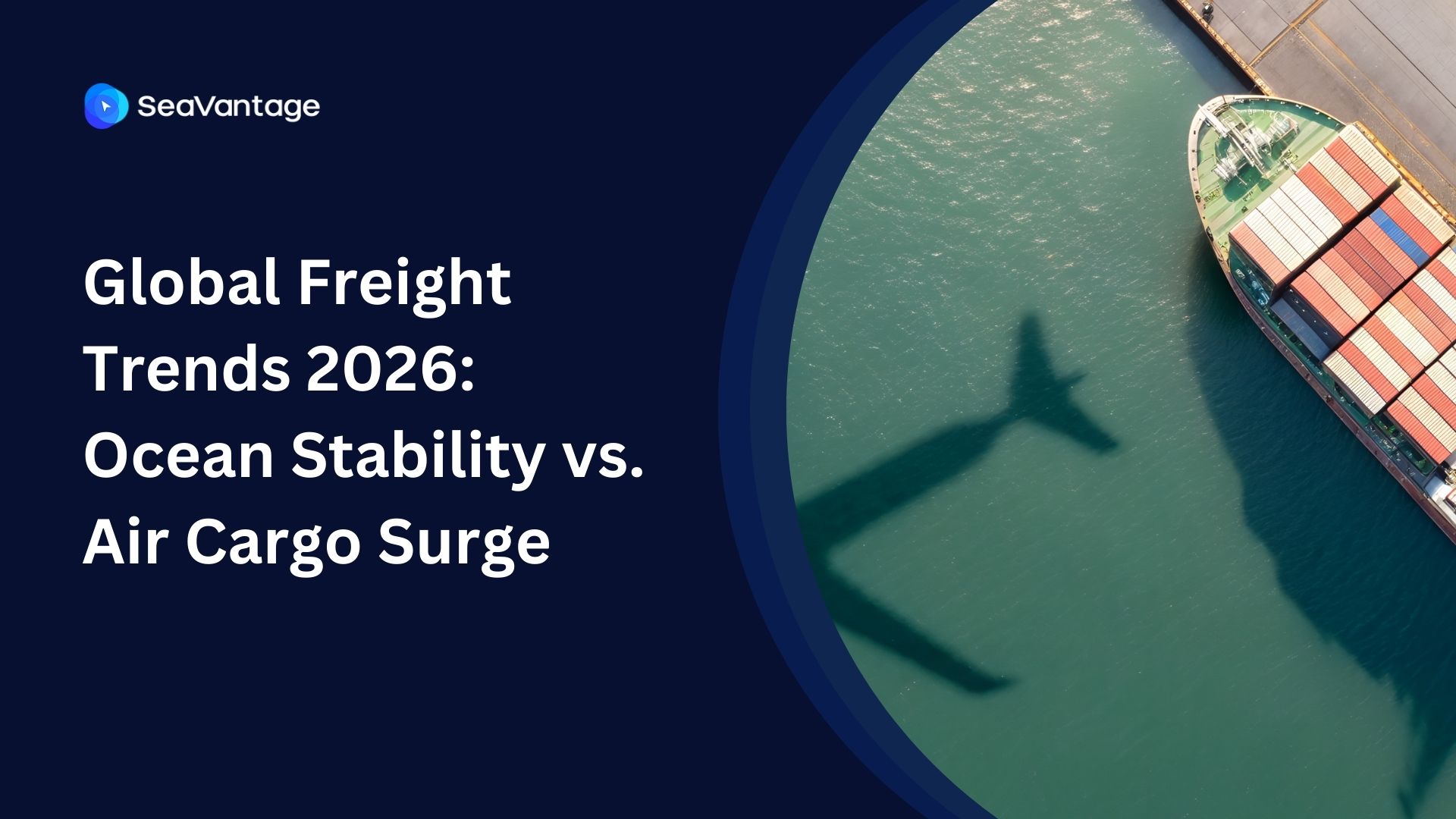Vessel Tracking API: A 2025 Guide to Real-Time Shipping Visibility
.jpg)
In today's volatile global shipping landscape, waiting for milestone updates is a strategy for failure. Port congestion, weather disruptions, and geopolitical events can derail a shipment at any moment, leaving you and your customers in the dark. To achieve the agility and resilience required in 2025, businesses must move from a reactive to a proactive footing. The key to this transformation is real-time, granular visibility.
This is where a Vessel Tracking API becomes an indispensable tool. By integrating live vessel data directly into your own systems, you can automate tracking, anticipate disruptions, and offer a superior customer experience. This guide will walk you through what a vessel tracking API is, why it's crucial for modern logistics, and how you can integrate one to unlock seamless shipping visibility.
What Exactly is a Vessel Tracking API?
A Vessel Tracking API (Application Programming Interface) is a service that allows your software applications to programmatically request and receive real-time and historical data about ships' positions, movements, and characteristics.
At its core, this technology is powered by the Automatic Identification System (AIS), a global tracking system used on ships. As mandated by the International Maritime Organization (IMO), vessels broadcast AIS data containing their identity, position, course, and speed. A high-quality Vessel Tracking API collects this raw data from a vast network of terrestrial and satellite receivers, then cleanses, standardizes, and enriches it to deliver accurate, reliable information directly to your systems.
This is fundamentally different from manually checking a public vessel finder website. An API is built for system-to-system integration, enabling automation, scalability, and the creation of powerful, data-driven logistics tools.
Why a Vessel Tracking API is a Competitive Necessity in 2025
Integrating a vessel tracking API is no longer a luxury; it's a foundational element of a modern, data-driven supply chain. Here’s why it provides a distinct competitive advantage:
- Radically Enhance Operational Efficiency: Eliminate countless hours of manual track-and-trace work. By automating data collection, your team can focus on managing exceptions and adding value, not chasing information.
- Master Proactive Disruption Management: Don't wait for a delay to be reported by a carrier. A real-time API allows you to see when a vessel deviates from its course, slows down unexpectedly, or is heading toward a congested port, giving you time to adjust plans and notify stakeholders.
- Deliver a Superior Customer Experience: Provide your customers with the one thing they value most: accurate and timely information. With an API, you can build customer-facing portals with live tracking maps and send automated, reliable ETA notifications.
- Unlock Data-Driven Insights: Go beyond real-time tracking. Use historical voyage data to analyze carrier performance, identify optimal shipping routes, and improve your strategic procurement and network design. For more on this, see our guide to enhancing supply chain visibility with real-time data.
- Reduce Costly Fees: Proactive management empowered by real-time data is your best defense against expensive demurrage and detention fees. By accurately predicting arrival times, you can pre-schedule drayage and warehouse labor, ensuring containers are picked up before free time expires.
Key Features of a Best-in-Class Vessel Tracking API
When evaluating API providers, not all services are created equal. Look for an API that delivers comprehensive, accurate, and easy-to-use data.
- Global, Multi-Source Data Coverage: The API must provide both terrestrial and satellite AIS data for complete global visibility, even in open oceans far from coastlines.
- Unwavering Data Accuracy: The best APIs don't just pass on raw AIS data. They use advanced algorithms to cleanse, enrich, and cross-verify information, correcting for errors and filling in gaps to provide decision-grade intelligence.
- Rich, Detailed Data Points: Look for more than just latitude and longitude. A robust API should provide:
- Vessel Identity: IMO number, MMSI, name, call sign.
- Voyage Details: Real-time position, speed, heading, current draught.
- Itinerary Information: Stated destination, calculated ETA, last port of call.
- Vessel Master Data: Ship type, dimensions, year built, flag.
- Real-Time and Historical Data Access: Access to both live data streams and a deep archive of historical voyage data is essential for both operational management and strategic analysis.
- Developer-First Experience: The API should be easy to integrate, with clear documentation, a logical RESTful structure, and responsive technical support to get your developers up and running in hours, not weeks.
- Scalability and Reliability: Ensure the provider's infrastructure is built to handle enterprise-level volume with high uptime and low latency, so your applications are always fast and responsive.
A Simple Guide to Integrating a Vessel Tracking API
Integrating a vessel tracking API is more straightforward than you might think. Here’s a high-level, four-step process:
Step 1: Define Your Goal: First, identify the problem you want to solve. Do you want to display a live map in your customer portal? Automate ETA updates in your TMS? Feed data into an analytics platform to measure carrier performance? A clear goal will guide your integration.
Step 2: Choose Your API Provider: Select a provider that meets the criteria listed above. Look for a partner that offers not just data, but a reliable, enterprise-grade solution. This is where a specialized maritime data provider like SeaVantage can make all the difference.
Step 3: Get Your API Key:Typically, this involves a simple sign-up process where you'll receive a unique API key. This key authenticates your application's requests to the API service.
Step 4: Make API Calls and Use the Data: Your developers can now start making requests to the API, usually by sending a vessel identifier like an IMO or MMSI number. The API will respond with a structured data file (commonly in JSON format) containing all the latest information for that vessel, ready to be used in your application. For example, you can use this data to plot a vessel's location on a map or update an ETA field in your database.
Conclusion: The Future of Shipping is an API-Connected Future
In an era defined by uncertainty, real-time data is the ultimate currency. A Vessel Tracking API provides the foundational data layer for building a more intelligent, responsive, and resilient supply chain. By integrating live, accurate vessel data directly into your workflows, you can move beyond simple visibility and achieve true operational command. You'll not only save time and money but also build stronger, more transparent relationships with your customers.
Ready to transform your shipping visibility? Explore the SeaVantage Vessel Tracking API and start your free trial today.
2025년 9월, 주요 글로벌 항만에서 어떤 운송사가 가장 긴 선박 체류 시간을 기록했는지 확인해보세요. 트렌드를 비교하고, 지연을 파악하며, 전체 항만 데이터를 통해 운송 전략을 최적화할 수 있습니다.
2025년 8월, 주요 글로벌 항만에서 어떤 운송사가 가장 긴 선박 체류 시간을 기록했는지 확인해보세요. 트렌드를 비교하고, 지연을 파악하며, 전체 항만 데이터를 통해 운송 전략을 최적화할 수 있습니다.
2025년 7월, 주요 글로벌 항만에서 어떤 운송사가 가장 긴 선박 체류 시간을 기록했는지 확인해보세요. 트렌드를 비교하고, 지연을 파악하며, 전체 항만 데이터를 통해 운송 전략을 최적화할 수 있습니다.
iscover the 4 critical ocean freight trends for 2026, from the Red Sea reopening and fleet overcapacity to shifting global trade maps. Prepare your supply chain now.
Discover key 2026 freight market trends: Port of Houston expansion, air cargo "super peak," and ocean freight stability. Plan your supply chain with SeaVantage.
Explore November 2025 global port dwell time data. See which ports and carriers led in efficiency across Antwerp, Busan, Long Beach, Rotterdam, and Singapore.



.svg)





.jpg)

.png)